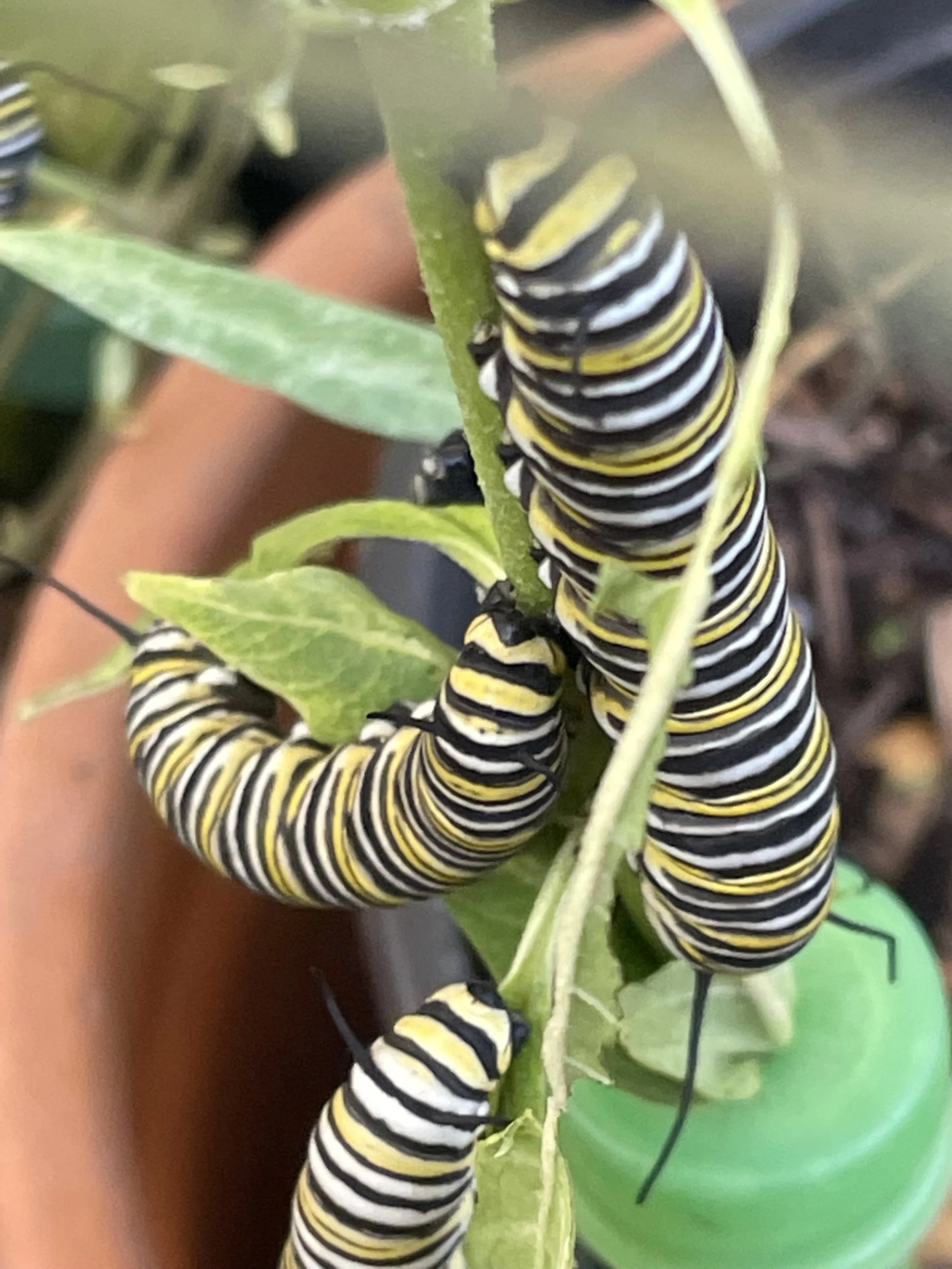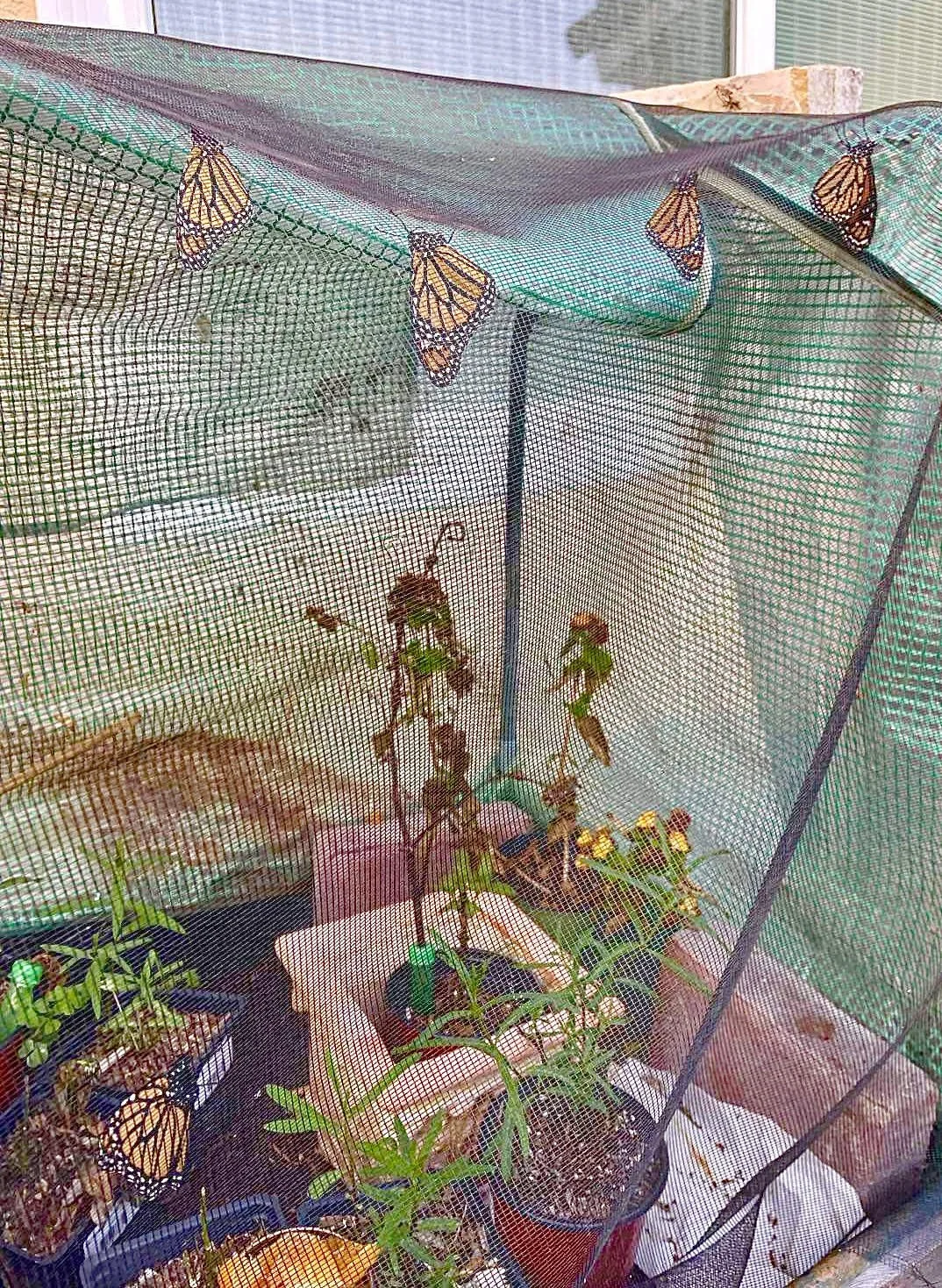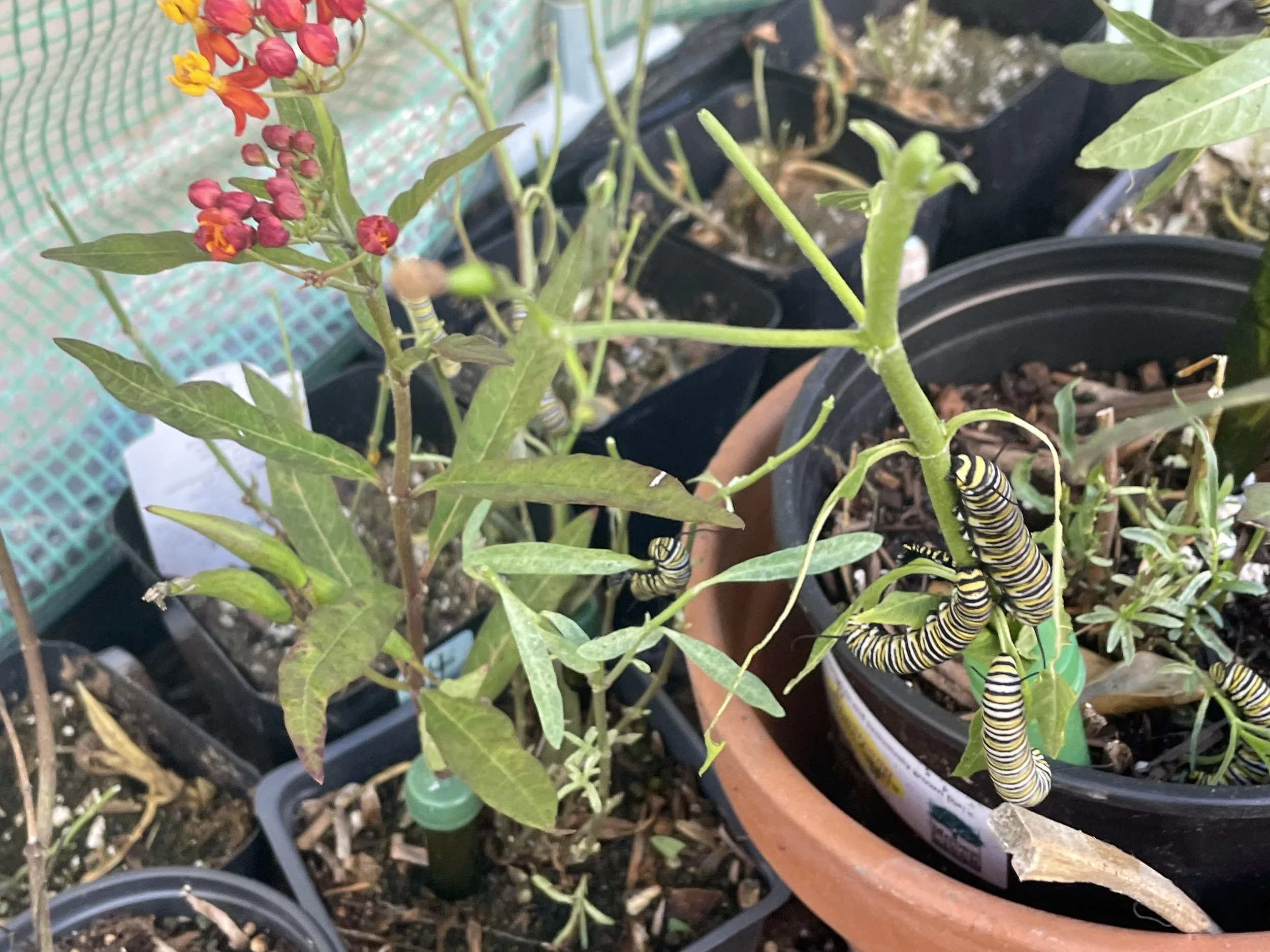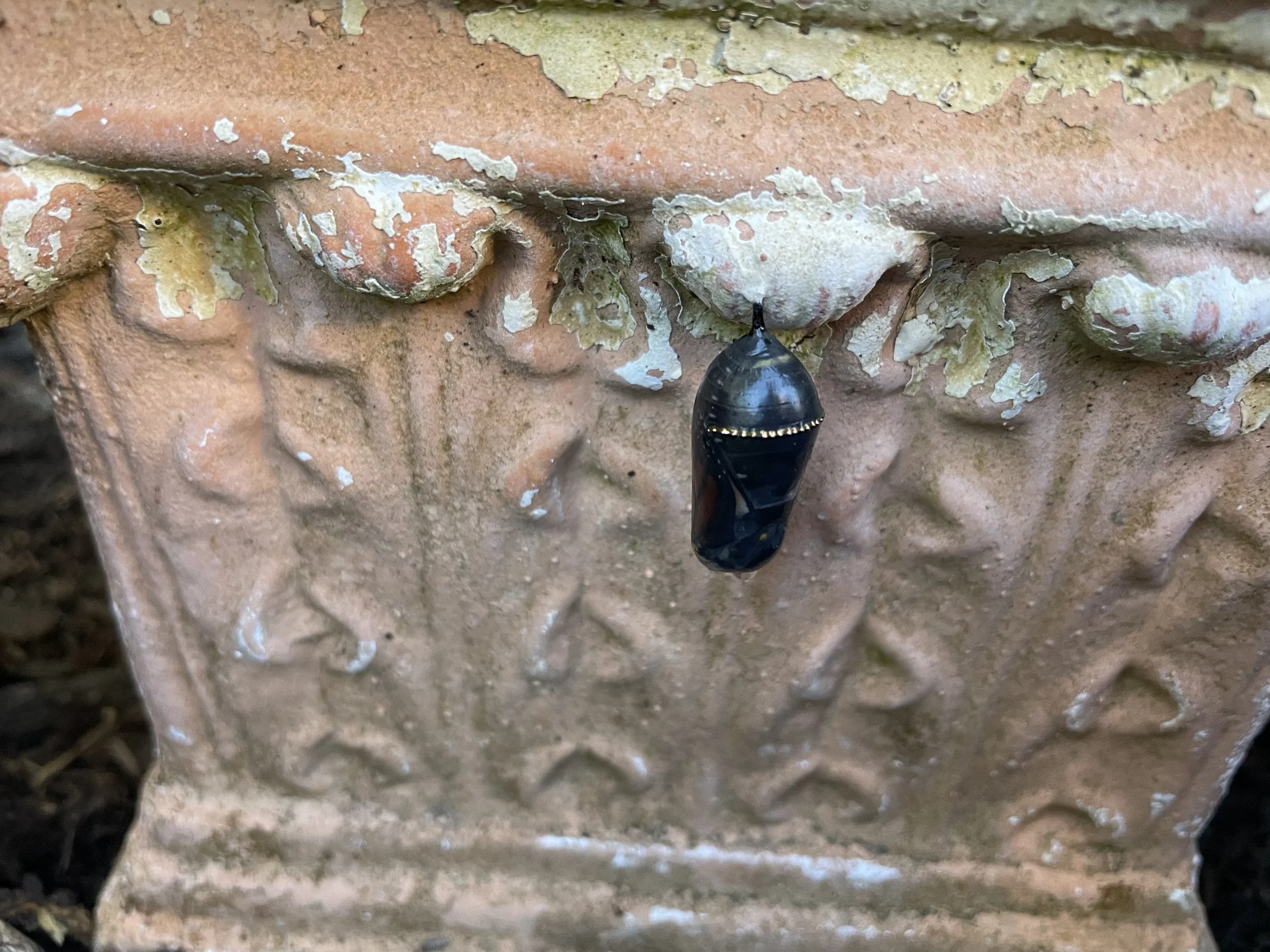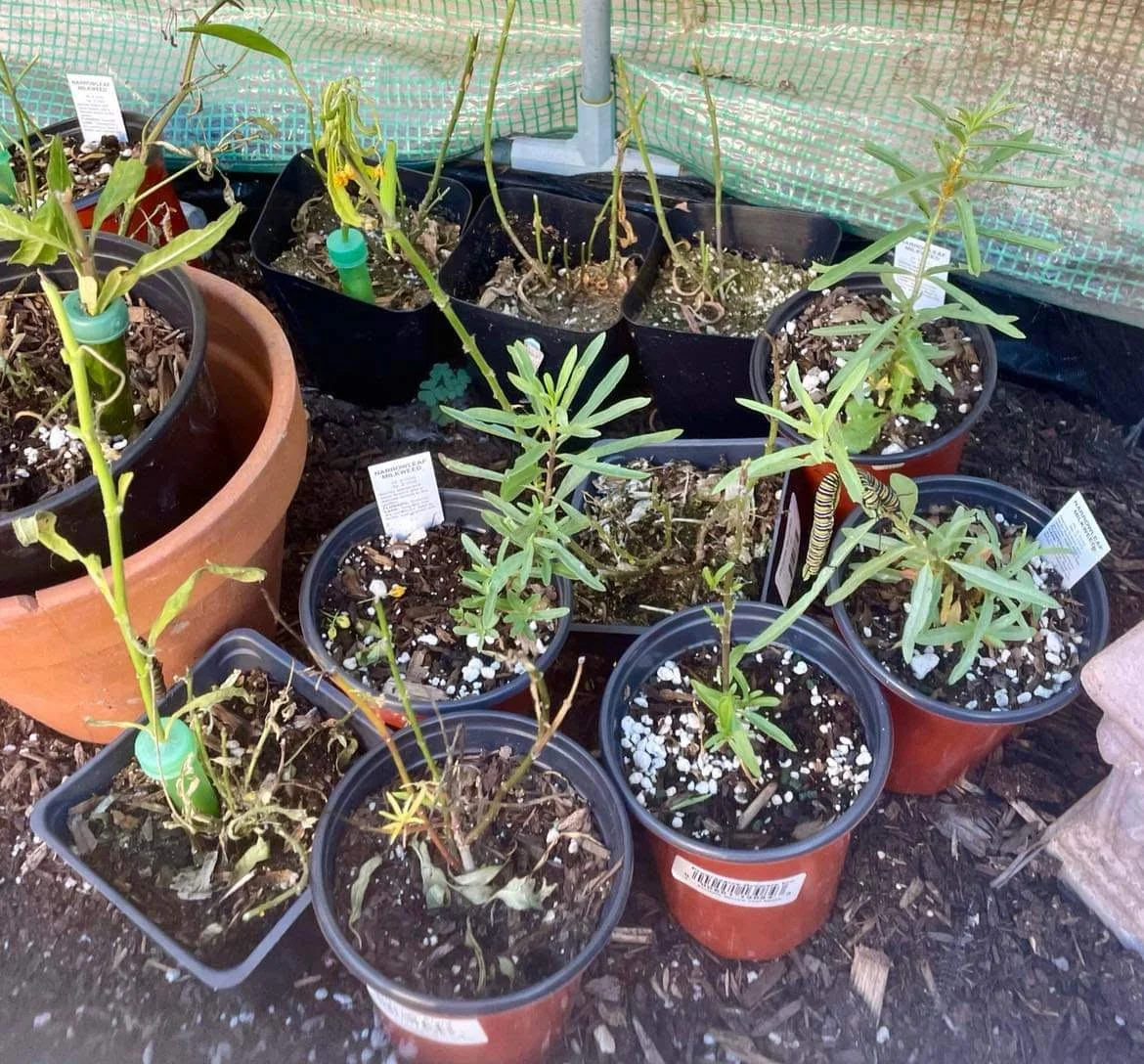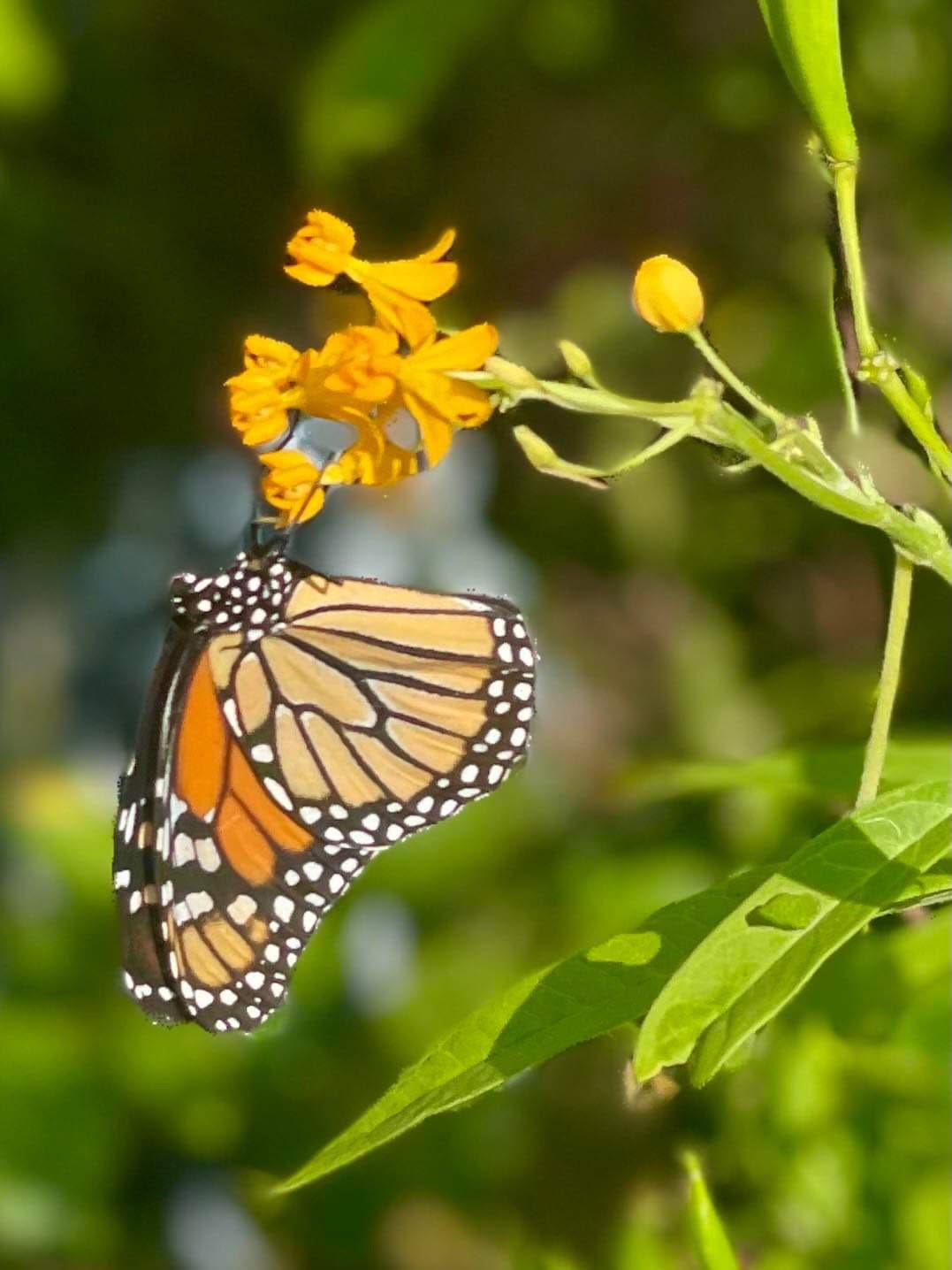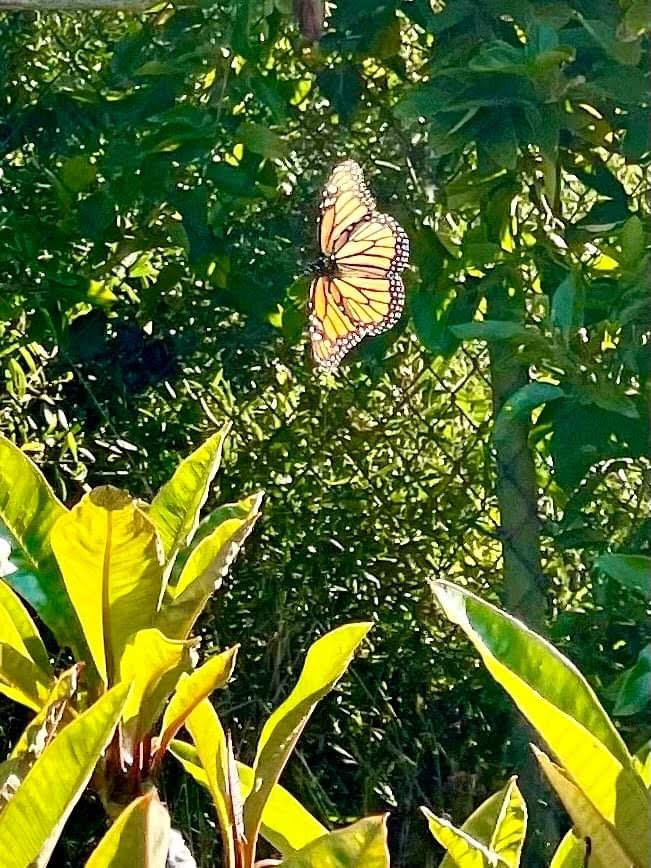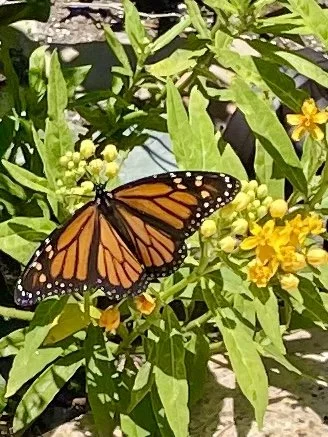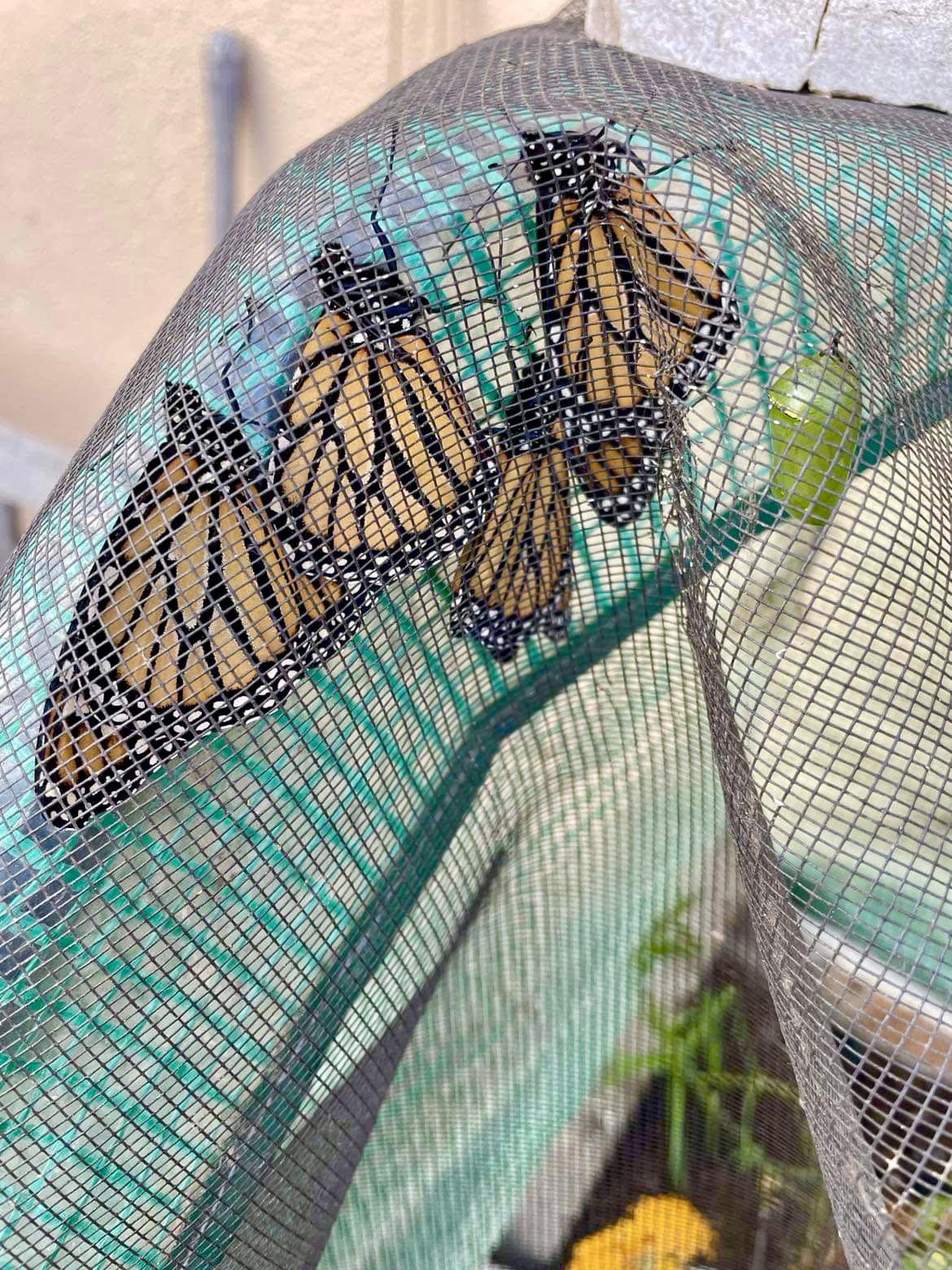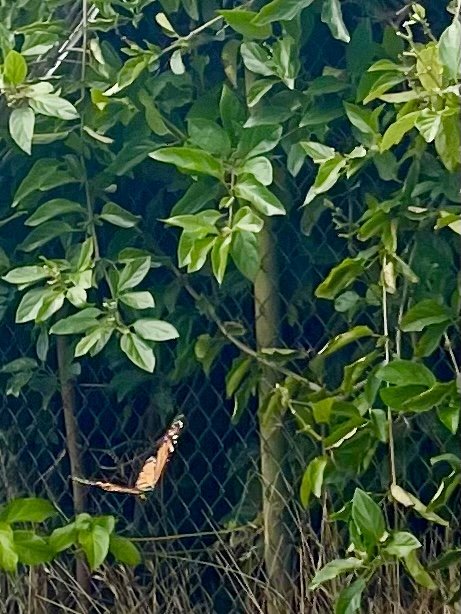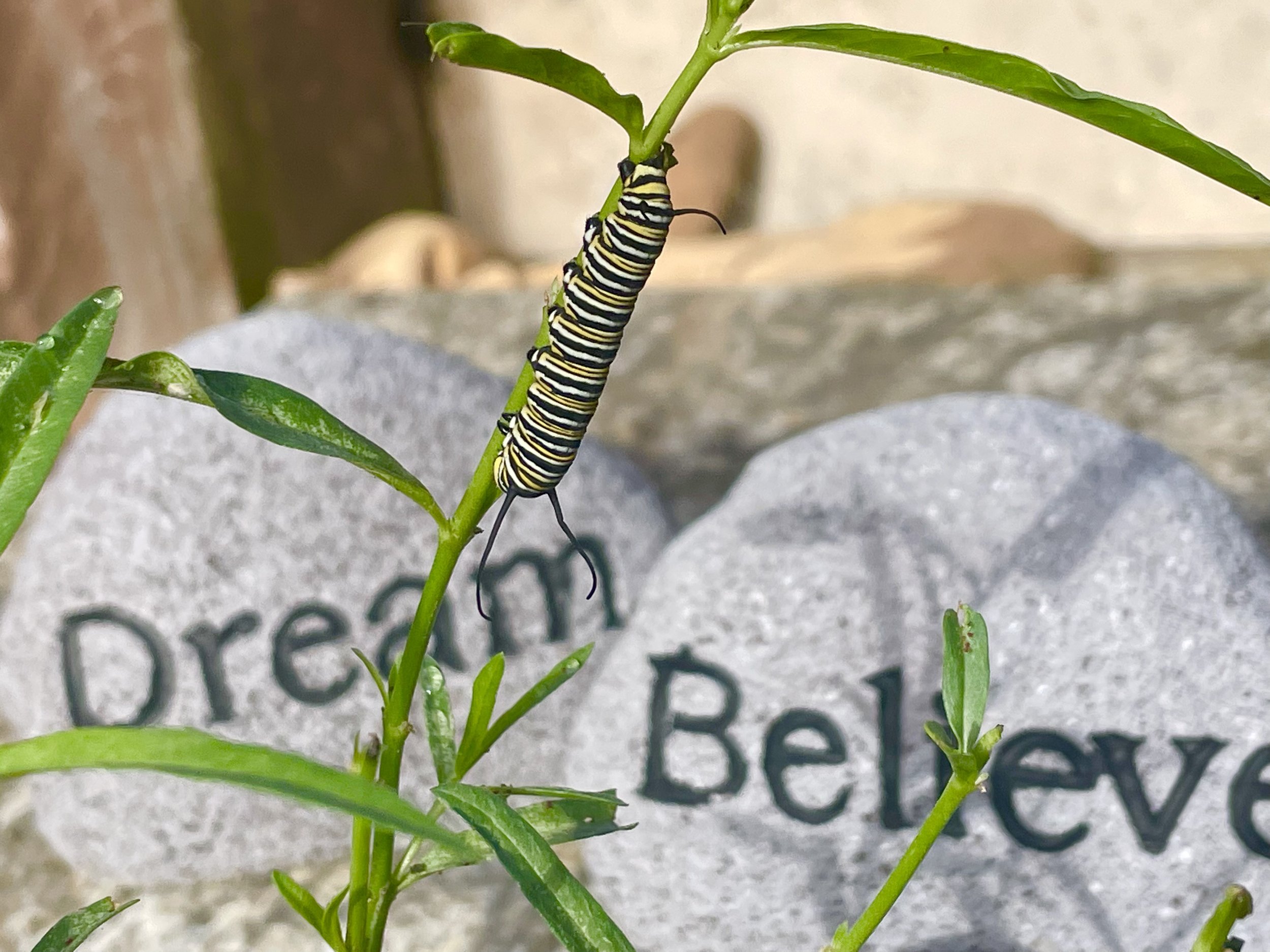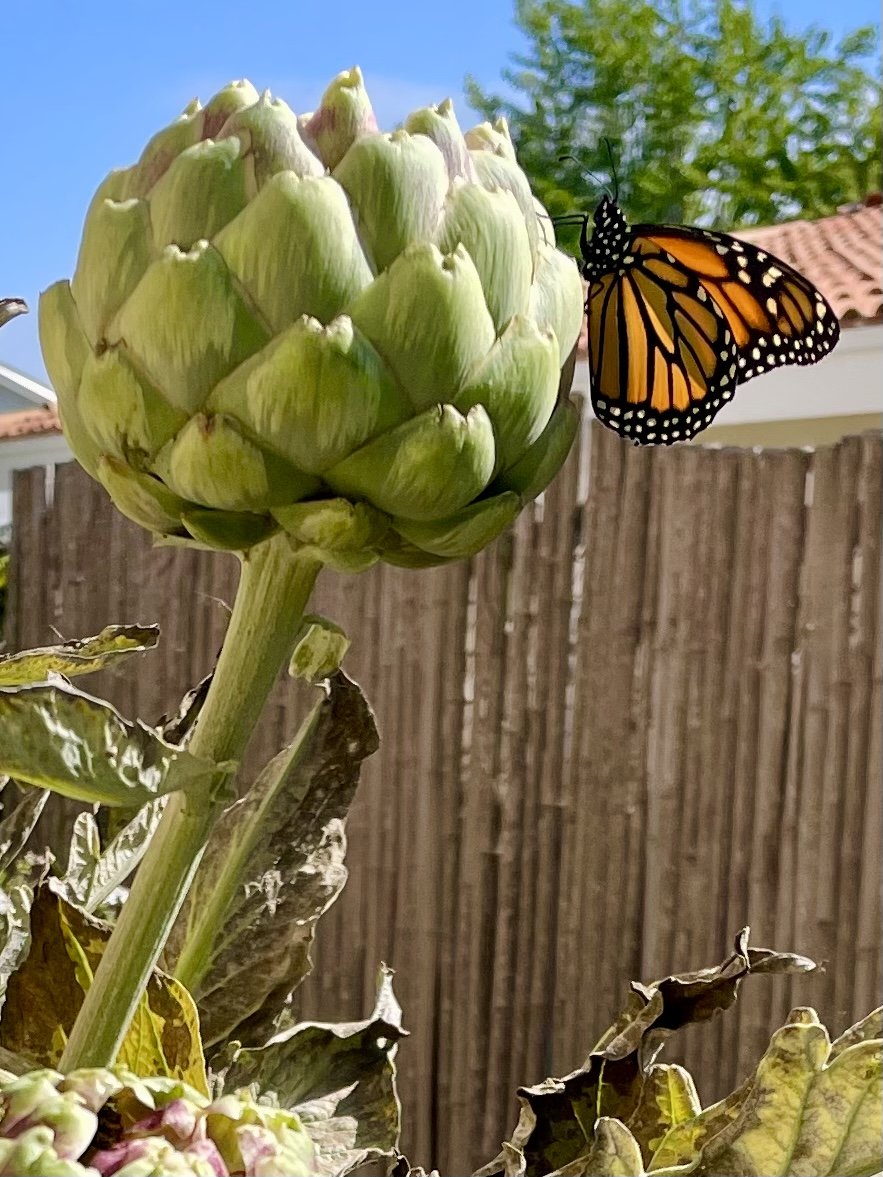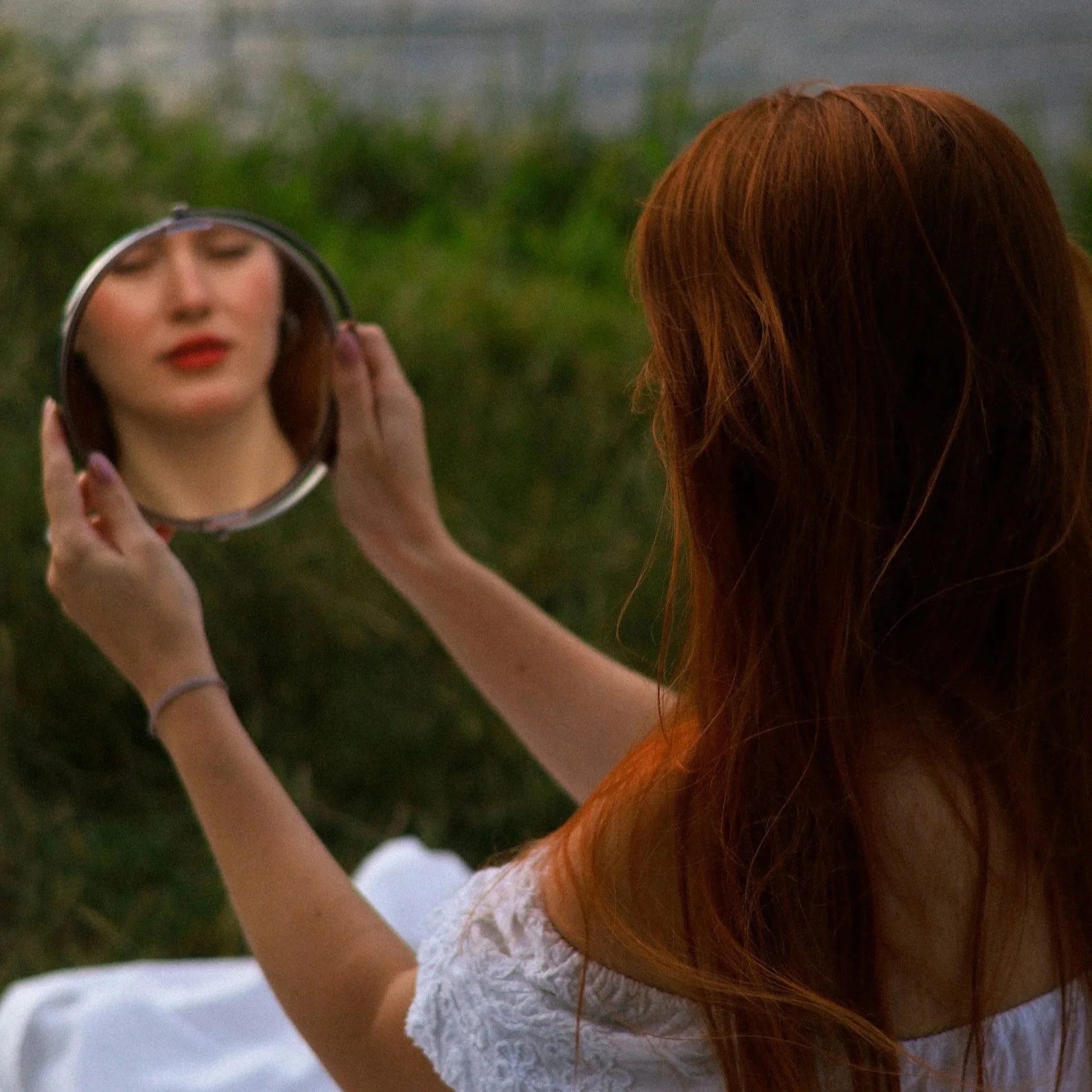My Butterfly Bungalow By Writer and Contributor Marie Chura
I’ve always loved butterflies, but even more so after reading about their lifecycle and paying several visits to the butterfly pavilion at the South Coast Botanic Gardens. It was there that I learned that different butterflies have different diets as caterpillars. I’d heard of people raising Monarch caterpillars until they became butterflies and then I became even more intrigued with the life cycle after hearing a speaker on the topic at a meeting of the Epiphyllum Garden Club at the South Coast Botanic Gardens. Enlisting my husband’s help, we scoured the backyard brainstorming on what type of structure we could create to house the caterpillar/butterfly habitat. We finally had that lightbulb moment when I realized that I had an above ground planter, on wheels, that had been given to me by a neighbor. It came with an overarching metal frame and cover to create a greenhouse type environment. We kept this cover on the back half of the habitat and draped window screen material on the front.
Preparing for move-in day, I made my first of 4 trips in 5 days to Armstrong Nursery to buy native narrowleaf milkweed plants that I would place inside the habitat - still in their pot from the nursery. Milkweed is the sole diet of Monarch caterpillars. Growing only native milkweed keeps the Monarch butterflies on a natural track with their lifecycle and migration. They love to eat tropical milkweed as well, but this plant grows well all year round and may interrupt the cycle as Mother Nature intended it! In order to assist in this natural lifecycle, tropical milkweed needs to be pruned, leaves and seed pods removed (sometimes multiple times) from November through February.
In the first two weeks, I transferred about 30 Monarch caterpillars of various sizes into their new home. I found them randomly on milkweed in my garden, on walls, on the sidewalk and even crossing the driveway. They traveled into their new habitat via pieces of mulch bark, on my gloved hand or on branches that I cut from existing tropical milkweed growing in my yard. For the latter mode of travel, I placed the cut end of the branch into a florist tube of water and then stuck that into the pot of one of my new milkweed plants. They all took to the new digs and immediately resumed their voracious munching on the milkweed!
From this description of their ravenous appetite, I’m sure you can understand what became my almost-daily trips to Armstrong! (Home Depot and Lowe’s were both sold out of native milkweed.) On one trip to Armstrong, they only had 6 plants left so I bought them all! I checked in on the habitat multiple times a day, removing the plants with naked branches and replacing them with new ones. I also repositioned potted milkweed to allow easier access as the caterpillars moved from one plant to another. I even created walkways with wooden chopsticks! And there’s no need to discard the leafless plants – they start growing back in a matter of days. The plants do need to be watered as their soil dries out, but I always made sure not to overwater and drown caterpillars who may be in the dirt.
Watching the caterpillars eat, grow, and move from plant-to-plant was fascinating, but even more fascinating was watching them search for a place to hang. When they’re all grown up, fat and full, then they find a place to hang to transform into a chrysalis. Hanging in the shape of a “J” is the first indication that they’re preparing to transform into a chrysalis by the final shedding of their skin encasing themselves. The chrysalis is a beautiful shade of green with gold dots near the top around the circumference. These sparkly gold dots allow oxygen into the chrysalis. As the chrysalis hang for about ten to fourteen days, they become more and more translucent until you can see the details of the Monarch butterfly wings. And as much as I checked in on them, I never witnessed the birth of a butterfly. It seemed like I’d check on them and then an hour or two later, there’d be a butterfly and a newly empty chrysalis! After releasing butterfly #1 from the bungalow to the outside world, we quickly realized it was too soon. It needed to exercise its wings and maybe dry out a bit more. So I scooped it up from the dirt and placed it back into the habitat to get stronger.
This habitat creation spanned from May 20 to July 4 th as the last butterfly left the nest.There certainly was a lot going on in this 6-week period - 14 chrysalis and 14 beautiful monarchs. I mentioned earlier that I transferred about 30 caterpillars into the habitat. I don’t know what happened to them all! There were a few escapees we found on the ground or on the outside of the screen – so let’s hope they all found their way. It was such a beautiful event each time we opened the screen to let the new Monarchs fly to freedom. They really are one of God’s most amazing creatures given their journey from a tiny egg to a beautiful butterfly.
The cycle continues as Joyce and friends continue to fly through our front and backyard, no doubt laying eggs on any milkweed leaves they can find. Who’s Joyce? Joyce was my mom. She passed away in January 2023. She loved watching Monarch butterflies on her deck in San Pedro. And as my sister reminded me, many consider butterflies to be spiritual angels, a sign of rebirth, peace and hope. We have come to embrace that feeling. Our oldest daughter Nicole started naming the butterflies as they “left the nest” starting with Joyce and continuing with the names of her friends from Palos Verdes
Shores where she lived. We had Ginger, Virginia, Louise, Diane, June, Audrey and Lucia to name just a few. But with our daily sightings that continue until today, we now refer to them all as Joyce knowing she’s here with us enjoying the flight and the sights with her family.
In August I restarted the butterfly bungalow with more caterpillars and fresh milkweed leaves from the original plants plus another trip toArmstrong. I am excited and looking forward to more beautiful chrysalis and miraculous Monarchs.
Marie Chura is a 24-year resident of Rancho Palos Verdes. She and her husband Dave are the proud parents of two daughters in their 20s, one living here in Palos Verdes and the other in Denver, Colorado. Marie holds a B.S. and M.S. in Computer Science from UCLA and LMU respectively. Her career as a Software Engineer spanned 20 years at Hughes Aircraft Co. and Raytheon. Following that, she received an additional M.S. from LMU in School Counseling and interned in Palos Verdes at both PVPHS and PVHS. She was a volunteer at both daughters’ schools in PVPUSD for 16 years, part of National Charity League for 9 years, as well as a Sunday School teacher for over 10 years. Marie is the President of the South Bay Dance Club, a member of St. Peter’s by the Sea Presbyterian Church, President of the La Cresta Homeowner’s Association and the newest board member of the RPV Council of Homeowners Association (CHOA). Marie enjoys spending time in the backyard with the butterflies, squirrels, birds, dogs, and taking care of her vegetable garden. She enjoys live music, ballroom; line dancing, walking the trails of Palos Verdes, whale watching, traveling, attending plays and of course, spending time with her family and friends.


